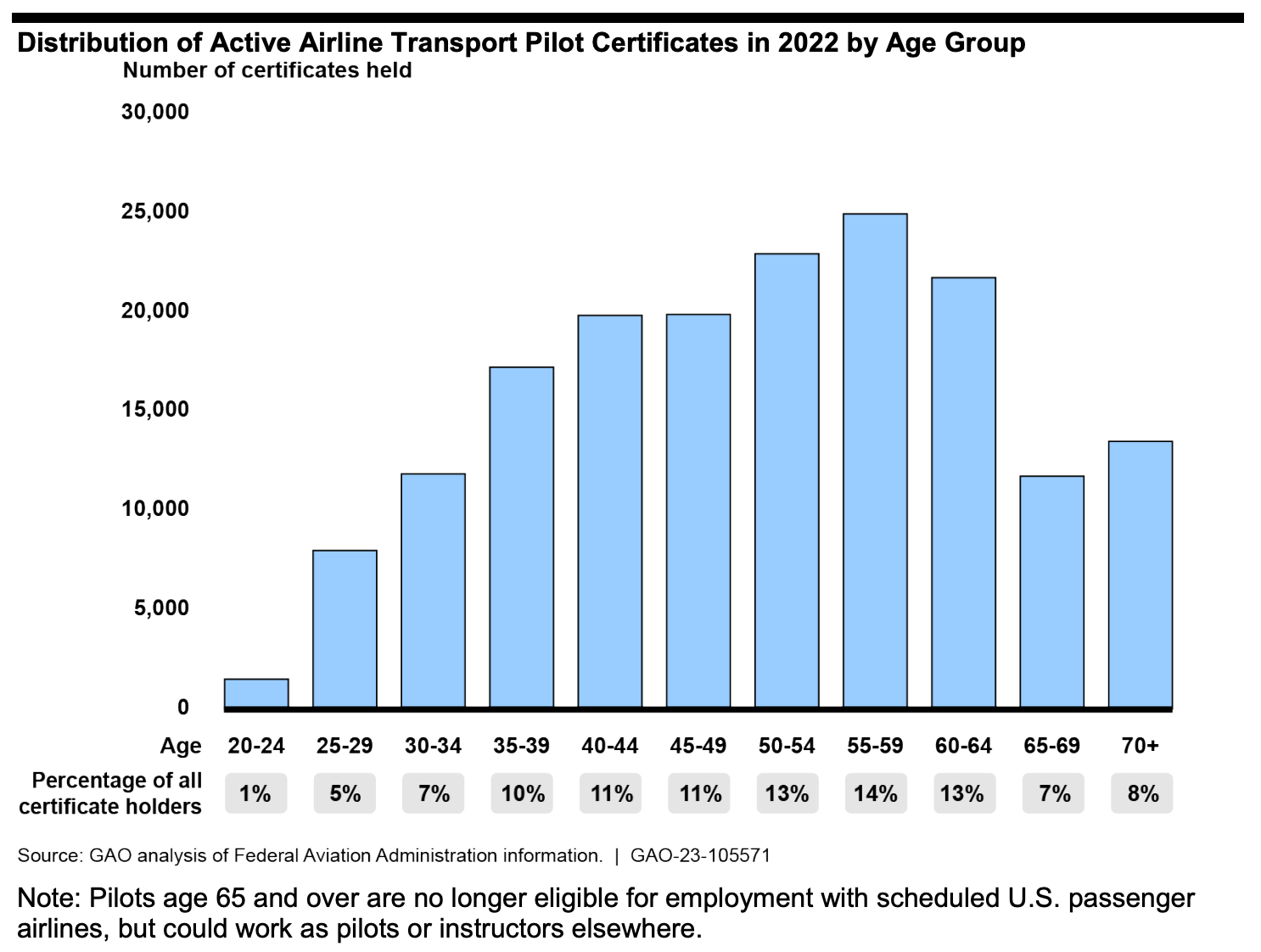Costs of entry: “According to data from the University Aviation Association, the average cost of a four-year degree plus flight training “lab fees” in 2021 was $85,745 for in-state students ($13,768 per year on average) and $138,511 for out-of-state students ($20,656 per year on average).52 According to University Aviation Association data, the average cost of flight training in 2021 was $55,887.” (These amounts far outpace the available federal loans and grants.)
The 1,500-hour rule: “representatives from two regional airlines identified the flighthour requirement as a barrier to entry that has played a part in constraining the pilot labor pool and contributed to current pilot supply challenges” – but, “The Air Line Pilots Association (ALPA) has stated that the 1,500-hour requirement has contributed to enhanced aviation safety and attributes the pilot supply challenges airlines have recently experienced to their decisions to implement workforce reductions in 2020.”
Diminishing military pipeline: “Representatives from a major airline, an industry association, and FAA told us that the military is the source of fewer pilots for airlines than in the past. We reported in 2014 that an estimated 70 percent of airline pilots hired prior to 2001 were military-trained. In 2018, we reported that representatives from an airline pilots’ association estimated that former military pilots make up about half of new hires at larger mainline airlines and about 30 percent of new hires at low-cost mainline airlines and regional airlines. Additionally, the military faces its own pilot shortfall, and in response, has implemented measures to better retain pilots.”
Machinists. Specific problems faced in that field include:
Training: “According to survey data compiled by the Aviation Technician Education Council (ATEC), an association representing maintenance schools, estimated enrollment at maintenance schools from 2017 to 2021 rose from 17,791 students in 2017 to roughly 21,000 in 2021. However, officials we spoke with from two maintenance schools indicated that their enrollments have either remained fairly steady or decreased in recent years. For example, officials from one school told us that before the pandemic they had a waiting list for enrollment, but now they are unable to fill all their available seats.”
Poaching. “…the set of skills mechanics acquire from maintenance schools is valued by other industries, which may offer more attractive compensation or work environments than the aviation industry. We have previously reported that mechanics have relevant skills for working at a variety of occupations, including on oil rigs or at amusement parks…According to a survey of students at maintenance schools included in the ATEC Pipeline Report 2021, 23 percent of survey respondents took jobs outside of aviation in 2020, a 15 percent increase from two years earlier.”
Bad data: “The total pool of mechanic certificates, which includes the new certificates, also increased from 2017 to 2022 (by 12 percent, from 286,268 to 320,042 certificates—an annualized growth rate of about 2 percent per year). However, these data provide limited information on the current aircraft mechanic workforce, as the number of mechanic certificate holders who have retired from, or otherwise left, the aviation industry since 2017 is unknown. Additionally, as we reported in 2020, individuals holding mechanic certificates might never work in the aviation industry, or might begin their career in the aviation industry and leave for a job in another industry, and these data are not reported.41 Additionally, there is no mandatory retirement age for aircraft mechanics (from which the number of certificate holders exiting the workforce over a period of time could be estimated), and the number of certificate holders who are deceased is not reported.”
Unexpected factoid from the report: “…faculty from the three collegiate aviation programs told us that the 1,500-hour requirement has had the benefit of helping schools retain flight instructors longer because their time instructing students counts toward the 1,500 hours. Absent the requirement, they said, many of their flight instructors would already have left to begin their pilot careers.”




